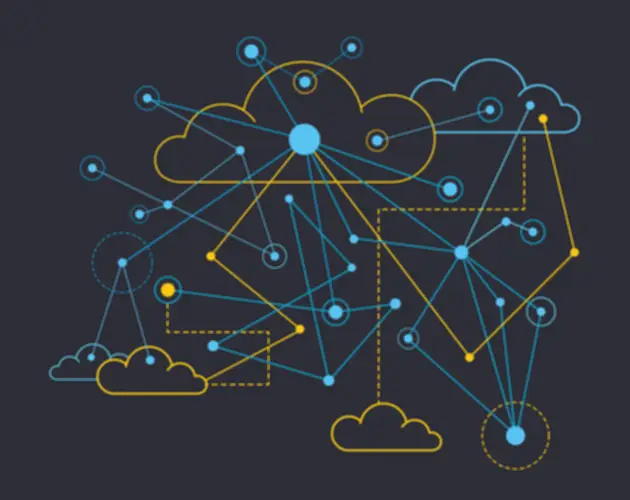Jenkins has an extended history, stretching back to 2011, and its roots lengthen again even additional to 2004. The open supply software he constructed, known as Hudson, automated tests and builds and helped him perceive whether his code would work a lot sooner. Jenkins has a robust extension and plugin system, enabling integration with numerous external tools like SonarQube for code scanning.
In addition to its core functionality, Devtron permits you to configure and execute strong CI pipelines directly within the platform. Verify out this blog to simplify the CI/CD pipelines for Kubernetes. Alternatively, you possibly can combine any steady integration (CI) tools like Jenkins and GitHub Actions. Furthermore, Devtron supplies visibility across a number of Kubernetes clusters, offering granular insights. In this comprehensive guide, we’ve lined the basics of organising Jenkins for CI/CD.

We’ve added a pipeline creation wizard that can create all of the component configurations so you can spend much less time with YAML and extra time getting work done. Jenkins CI offers Application Migration quite a few built-in steps that deal with common tasks, such as building, testing, and deploying code. Overriding these steps with custom implementations can lead to inconsistencies, errors, and increased maintenance effort. Familiarize yourself with the built-in steps and plugins out there for Jenkins CI, and make the most of them each time potential. This ensures that you are leveraging well-tested and community-supported solutions for frequent tasks.

Why Is Jenkins Utilized In Automation?
It has an enthusiastic developer group that frequently holds in-person and online conferences. You could assure the dependability and maintainability of your codebase by establishing unit testing and code quality review procedures in Jenkins. In Declarative Pipeline syntax, the pipeline block defines all the work donethroughout your whole Pipeline. A node is a machine which is part of the Jenkins surroundings and is capable ofexecuting a Pipeline. Jenkins runs as a server on a wide selection of platforms together with Windows, macOS, Unix variants and particularly Linux. It requires a Java 8 VM or above, and is run on the Oracle Java Runtime Environment or OpenJDK.
The idea was to check the code before committing to avoid breaking builds. Jenkins is a platform for making a Steady Integration/Continuous Supply (CI/CD) setting. The system offers many different instruments, languages, and automation duties to aid in pipeline creation when growing and deploying programs. With that, you’ve successfully created a CI/CD pipeline with Jenkins. Bear In Mind, this is a basic instance and actual pipeline scripts could possibly be more complex, involving constructing the code, working tests, deploying the code, and extra. Jenkins Pipeline is instrumental in adding a rich set of automation tools onto Jenkins.
- Jenkins is distributed as a WAR archive and as installer packages for the major working methods, as a Homebrew package deal, as a Docker picture, and as supply code.
- This is identified as continuous integration and continuous supply or CI/CD.
- Repeating the identical steps in a number of pipelines can result in increased maintenance effort, potential inconsistencies, and errors.
A node is a machine on which you can build projects https://www.globalcloudteam.com/ and pipelines. Jenkins mechanically monitors the well being of all linked nodes, and if metrics go below a threshold, it takes the node offline. If the construct does not move in between tests, the developer is instantly notified to take appropriate action. Now, Jenkins is ready to deploy the build to an surroundings that allows any Person Acceptance Testing (UAT) earlier than the release into the manufacturing pipeline. It has a thriving, active community, it’s straightforward to deploy, and helps most environments.
Uncover how the Jenkins project has over 1800 plugins and parts developed by contributors to enhance its versatile CI/CD area, permitting for a variety of device. In this tutorial, you’ll learn how to quickly construct a Jenkins server and create a CI job using Docker and Docker Compose. Many testing instruments like Applitools have a plugin that can easily help get your testing and CI/CD working collectively. Examine out the Applitools plugin for Jenkins to see how this works.
Every instruction in the Dockerfile contributes to the creation of layers within the Docker picture. As the number of layers will increase in the Dockerfile, so does the scale of the resulting Docker image. In essence, the Dockerfile serves as the source code for generating Docker photographs, enabling consistency and reproducibility in containerized deployments. Jenkins is an open source continuous integration/continuous delivery and deployment (CI/CD) automation software program DevOps software written in the Java programming language. The Jenkins Pipeline is a user-made model for the continual delivery pipeline.
Jenkins is an open-source automation server that has gained immense reputation as a outcome of its flexibility, extensibility, and vast ecosystem of plugins. Jenkins is very customizable & scalable, making it a versatile software that helps numerous use instances and simplifies the software program improvement course of. Jenkins is probably the most widely adopted solution for steady supply, because of its extensibility and a vibrant, lively neighborhood. At the CI phase, multiple developers frequently maintain committing modifications to the central repository, once the code is committed the construct and test stage get triggered automatically. The automated process ensures that best practices are adopted, maintains the quality of code, and ensures that the code changes are integrated easily with current code.
Real-world Case Examine Of Steady Integration
The Security Realm controls a consumer’s access to Jenkins, whereas the Authorization Realm controls their permissions. Nonetheless, when using Groovy code inside Jenkins pipelines, it violated the fundamental rules of Jenkins, i.e., Jenkins pipelines must be simple to read, simple to handle, and simple. A pipeline is a set of actions that Jenkins will take to complete the CI/CD tasks. In other words, we will say that a Jenkins pipeline is a set of interconnected tasks that need to be achieved in a selected order. Design patterns and Java Annotations for plugins are used to specify how the plugin is created, the way it extends different plugins, and how its consumer interface seems in Jenkins.
Server security is achieved in the same way that another server is secured. Access to the place it resides, such as a VM or bare-metal server, is configured to allow for the fewest variety of processes to speak with the server. This is completed via typical server operating system and networking security measures. In abstract, Jenkins pipelines automate repeatedly releasing high-quality app updates by coordinating infrastructure.
Features Of Jenkins
As a result, Kohsuke Kawaguch created the Jenkins project and open-sourced the program. The usage unfold internationally with a present estimate of 1.6 million customers costs of quality. I hope this information helps you construct (and maintain) a high-octane CI/CD pipeline that your team will love. If you may have questions or want a hand, be happy to achieve out on the community boards, be part of the conversation on Slack, or open a ticket on GitHub points. You’ll find plenty of fellow Docker and Jenkins lovers who are joyful to help. This streamlined strategy ensures every step — construct, take a look at, deploy — lives in one cohesive pipeline, preventing those “where’d that step go?
It also can execute builds, though it isn’t as scalable as Jenkins brokers. Jenkins automation is usually triggered by code modifications in repositories like GitHub, Bitbucket, and GitLab, and integrates with construct instruments like Maven and Gradle. One important part of automating the software development process is establishing Jenkins to set off builds. Jenkins supplies a selection of ways to start builds both manually or routinely utilizing preset triggers.
In at present quick paced world of software program improvement, many organizations have been adopting DevOps practices by which they can innovate faster and in addition maintain the soundness of their services. One of the practices of DevOps is continuous integration and steady deployment (CI/CD) the place a number of groups can collaborate to manage the life cycle of companies. Jenkins is an open-source automation server written in java that automates parts of the software development process. It is used to construct, check and deploy software continuously which makes it easier for developers to integrate changes to the project and makes it simpler for customers to obtain a recent construct. Jenkins supplies hundreds of plugins to assist building, deploying and automating any project.
It is feasible to escalate the software program development course of with Jenkins automation. All Through the life cycle, it helps you handle software delivery processes. Various life cycle phases embrace constructing, testing, documenting, packaging, staging, deployment, and extra. One of its main uses is constructing software projects either by compiling the supply code, creating executables, or packaging the software program into a deployable format. Jenkins can routinely construct the software program every time code modifications are pushed to the repository and it might possibly additionally automate the process of testing the built software and reporting on construct outcomes. With Jenkins, organizations can accelerate the software program growth process by automating it.

